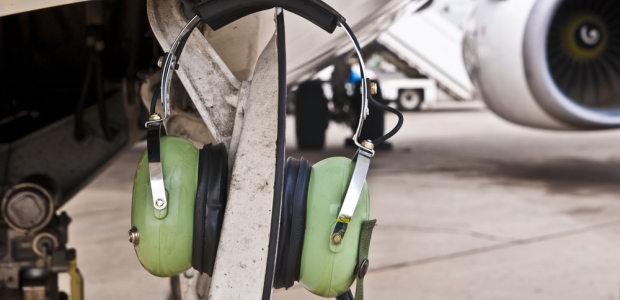
Take the Pledge to Protect Your Hearing in 2016
Even as hearing protection has improved in basic terms, such as weight, comfort, fit, and protection, we are seeing the introduction of more and more features.
- By Theresa Y. Schulz
- Mar 01, 2016
Wouldn't a physical injury that's 100 percent permanent—but one that's also very preventable—be worth a New Year's Day pledge to avoid? Of course it is.
The injury is noise-induced hearing loss (NIHL), which is "caused by exposure to excessively loud sounds and cannot be medically or surgically corrected," according to the U.S. Centers for Disease Control and Prevention (CDC). Here are the statistics:
- 4 million workers go to work each day in damaging noise.
- 10 million people in the U.S. have a noise-related hearing loss.
- 22 million workers are exposed to potentially damaging noise each year.
The danger is that, unlike other physical injuries to one's eyes, hands, feet, head, etc., we don't often think about noise as being hazardous or that we're putting ourselves at risk of permanent hearing damage. But with the right information and protection, we can keep our hearing safe while at work and also at home.
Think of how hearing connects us to the world around us, to our friends, family, co-workers, and even our pets. When you're at home and around the sounds that perhaps mean the most to you, try this: undergo a "Quiet Diet" by observing just 60 seconds of silence (no noise—no speaking, tapping, music, videos, motors, etc.) and just listen. Notice any noise that you can't control? What about other sounds, the ones that you enjoy and even cherish? What if all those sounds just went away?
We all take our hearing for granted. That's a mistake that we all need to correct. The first step is choosing hearing protection when it's called for.
Getting the Right Protection
There are many types and styles of hearing protection. Ear plugs include disposable foam in various sizes and materials and reusable molded ear plugs also in a variety of shapes and sizes. Proper sizing is important for a good fit, which leads to both effectiveness and comfort. Ear muffs are a great choice for loud noise exposures for home-improvement projects because they’re easy to use. They can be quickly donned for a short noise exposure and then kept handy around the neck or on a belt for easy access.
The EPA has established a rating system for hearing protection based on the device's ability to block noise with a number called the Noise Reduction Rating (NRR). Higher numbers indicate greater noise-blocking potential, if worn properly. Honeywell has found that one of the most important features in ear muff selection is difficult to judge from a package: comfort. Chances are, you or your team is already clothed with an array of personal protective equipment, so although a comfortable ear muff often carries a higher price tag, quality hearing protection products from established manufacturers are well worth the added cost and will actually increase the likelihood the ear muff will be used.
Advances in Hearing Protection Technology
Hearing protection—like all technology—continues to make amazing advances. Even as hearing protection has improved in basic terms, such as weight, comfort, fit, and protection, we are seeing the introduction of more and more features.
Newer electronic ear muffs can offer built-in AM/FM radio or an option to plug into your own personal listening device or even Bluetooth connectivity. Others provide impact noise protection and integrated volume management, which are popular among shooting sports enthusiasts. The result is a fusion of personal protection from the hazardous noise of the season's fun and chores, along with a variety of entertainment options.
The most critical aspect of hearing protection is simply to wear it! Many times, when exposed to hazardous noise a worker rationalizes away the need for hearing protection. "I'll just be in the noise for a short time, it's not even worth putting on the earmuffs." But hazardous noise exposures are cumulative, meaning that every exposure – even for a few seconds – contributes to a potential hearing loss. The worker who "cheats" on the use of hearing protection in intermittent noise is the one who often suffers the loss, rather than the workers in continuous high levels of noise who use protection consistently.
Noise Exposures Closer to Home
One more thought: Even home is not all peace and quiet. Examples of how everyday household activities fill up our hearing with sound are illustrated by the "Howard Leight by Honeywell Noise Thermometer." Download a copy to print out for yourself from http://www.howardleight.com/hearing-protection/noise-thermometer.
Start the New Year with a pledge to protect your hearing. After all, the cost of hearing protection on any given day in 2016 is far less expensive than hearing aids later on, in both in dollars and sense.
For more information about the value of good hearing and the importance of hearing conservation, visit HearForever.org, an initiative from Honeywell Industrial Safety.
This article originally appeared in the March 2016 issue of Occupational Health & Safety.